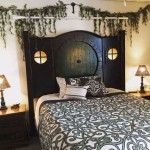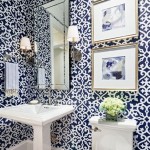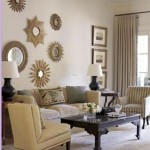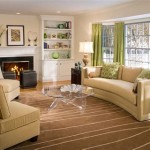What Color Should I Decorate My Bedroom?
Choosing a bedroom color is a significant decision. Since bedrooms are primarily spaces for rest and relaxation, the color palette plays a crucial role in creating a conducive environment for sleep and well-being. Various factors influence the ideal bedroom color choice, including personal preferences, room size, natural light levels, and desired mood.
Understanding Color Psychology:
Color psychology explores how colors impact human emotions and behavior. While individual responses to color can vary, some general associations exist. Warm colors, such as reds, oranges, and yellows, are often associated with energy and excitement. Cool colors, including blues, greens, and purples, tend to evoke feelings of calmness and tranquility. Neutrals like white, gray, and beige offer versatility and create a sense of serenity.Considering Room Size and Light:
Color can significantly alter the perception of space. Lighter colors tend to make a room feel larger and brighter, while darker colors can create a cozy, intimate atmosphere. In rooms with limited natural light, lighter colors are generally preferred to maximize brightness. Conversely, rooms with ample natural light can accommodate a wider range of colors, including darker shades.Creating the Desired Mood:
The intended purpose of the bedroom should guide the color selection. For a relaxing sanctuary, cool, muted tones like soft blues, greens, or lavenders are often recommended. These colors promote tranquility and can aid in sleep. If the bedroom also serves as a workspace, incorporating energizing accent colors in warmer tones can enhance focus and creativity.Exploring Popular Bedroom Color Choices:
Several colors consistently rank as popular choices for bedrooms due to their versatility and positive psychological impacts.Blue:
Blue is a classic choice for bedrooms, renowned for its calming and serene qualities. Various shades of blue offer different moods, from the airy lightness of sky blue to the deep tranquility of navy. Blue is believed to lower blood pressure and heart rate, promoting relaxation and better sleep.Green:
Green connects to nature, evoking feelings of tranquility and renewal. Soft greens create a calming atmosphere, while deeper shades like emerald or forest green offer a sense of sophistication and richness.Purple:
Purple is often associated with luxury and creativity. Lighter shades like lavender promote relaxation, while deeper purples create a dramatic and opulent feel.Gray:
Gray is a versatile neutral that offers a sophisticated backdrop for various décor styles. From light and airy to deep and moody, gray creates a calming and contemporary aesthetic. It pairs well with accent colors, allowing for easy customization.White:
White represents purity and cleanliness, creating a sense of spaciousness and airiness. It serves as an excellent base for layering textures and incorporating pops of color through accessories and artwork.Beige:
Beige offers a warm and inviting neutral backdrop, creating a cozy and comfortable atmosphere. It complements various design styles and pairs well with natural materials like wood and stone.Incorporating Accent Colors:
Accent colors add personality and visual interest to a bedroom. These colors can be introduced through textiles like bedding, curtains, and rugs, or through decorative elements such as artwork, lamps, and accessories. Choosing accent colors that complement the primary wall color is essential for creating a cohesive and harmonious look.Testing Colors Before Committing:
Before painting an entire room, testing paint colors is crucial. Paint samples on a section of the wall and observe them in different lighting conditions throughout the day. This allows for accurate assessment of how the color interacts with the room's natural light and existing décor elements. Consider using large paint swatches or painting a larger test area for a more realistic representation.Considering the Ceiling:
While often overlooked, the ceiling color plays a role in the overall ambiance of the bedroom. A lighter ceiling color can enhance the feeling of height and spaciousness, while a darker color can create a cozy and intimate atmosphere. Painting the ceiling a slightly lighter shade than the walls is a common technique to visually expand the room.Thinking Long-Term:
When selecting a bedroom color, consider the longevity of the choice. Neutral colors tend to be more timeless and adaptable, allowing for flexibility in changing décor styles over time. If bolder colors are desired, consider incorporating them through easily changeable elements like textiles and accessories rather than painting the walls.Personal Preferences are Key:
Ultimately, the best bedroom color is the one that creates the desired mood and reflects personal preferences. Considering color psychology, room size, lighting, and the overall design aesthetic can guide the decision-making process. Taking the time to explore different colors and test samples ensures a satisfying and personalized outcome.
45 Best Bedroom Paint Colors 2025 Color Ideas For

Simple Bedroom Decorating Ideas Home Design Jennifer Maune

7 Simple Summer Bedroom Decorating Ideas Setting For Four Interiors

Which Light Bedroom Colors Make A Room Look Bigger

8 Bedroom Colour Ideas Paint

25 Latest Bedroom Decoration Ideas By Livspace 2025

Best Bedroom Decor Ideas Forbes Home
:strip_icc()/262723384_455751379245336_6998901072180898093_n-c2d390ed69ad4d91928243b37f3c1582.jpg?strip=all)
17 Ways To Decorate With Light Blue In A Bedroom

How To Style A Bedroom 18 Decorating Tips Extra Space Storage

The 21 Best Paint Colors For Master Bedrooms In 2025
Related Posts







